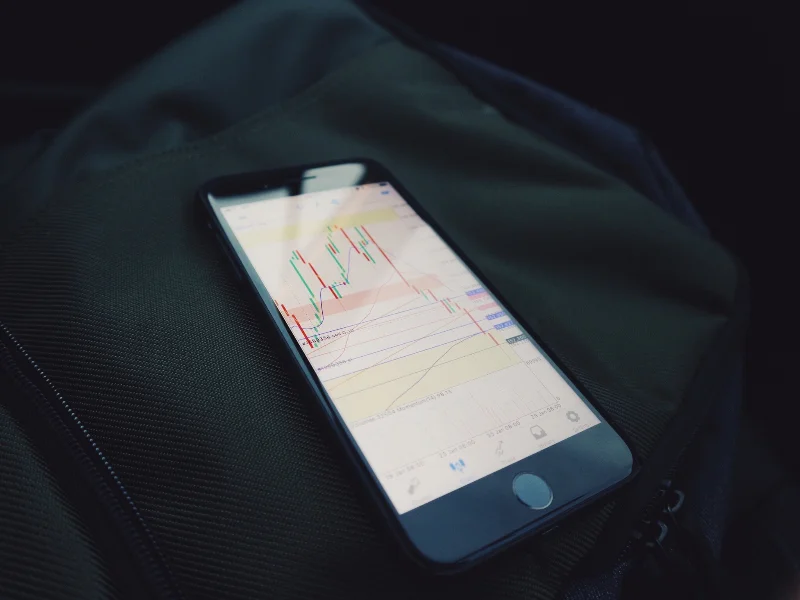Some traders hold positions in the market for mere minutes. While others hold them for days, weeks, months or even years.
So who’s right? And which approach should you use?
The answer is that both strategies can be rewarding. Deciding which strategy suits you best is what’s important, with many traders opting to use both.
What is short-term trading?
In general, short-term trading refers to trades made over a period of seven days or less.
Short-term trading takes into account traders who hold positions for only a few minutes (scalpers), traders who hold positions for hours or a whole day (day traders), as well as other traders, known as swing traders, who hold positions for a few days.
Pros of short-term trading
There are a number of benefits of being a short-term forex trader.
- You can trade on a large number of opportunities when currency rates change, meaning that you can capture every swing.
- You don’t have to tie up your money for long periods. Your margin capital is locked only for short periods, making it easier to withdraw it at short notice.
In long-term trading, your money gets caught in positions for months.
- The majority of forex trading signals work only for short-term trading. Usually, both technical and fundamental signals offer trading opportunities that disappear in several hours.
The number of signals and events that influence currency rates long term is small.
- Day traders can make small profits faster as they don’t have to wait long periods for their money.
Psychologically, closing profits (or losses) daily makes you feel relaxed as you don’t have to worry about what’s going on in the market after you’ve left your desk.
Cons of short-term trading
- Short-term trading demands a lot of your time. It also requires active trading on small timeframes such as 15 minutes, five minutes or even one minute, and can be very stressful, difficult and challenging.
- It requires very sharp focus.
- Sometimes, short-term trading signals and indicators can lead traders into making the wrong decisions, particularly when they are pressured for time, or are under stress.

Long-term trading
Long-term trading is making trades that stay open for months, and often years. These are buy-and-hold trades rather than quick, buy-and-sell trades.
Pros of long-term trading
- You might pay less in brokers’ fees. If you trade long-term, you make fewer trades but stand to get more pips from each position.
- Resistance to short-term volatility. Long-term forex traders don’t have to worry about things like intraday spikes; their positions are unaffected by daily market volatility.
If you trade long term, you have time to change your position when something important happens.
- Long-term trading can be simpler.
To trade successfully over long periods, you have to forecast the general trend and the exit points. On long-term charts, that’s rarely a difficult thing to do.
Since you trade rarely, you won’t need to make decisions too often, while in short-term trading, you have to develop complex strategies to succeed.

Cons of long-term trading
- Waiting a long time for profits. It can be weeks or months before you see a return.
- You need to be politically aware and understand economics. For long-term traders, understanding – and watching – how world events affect currencies is key.
Which style is right for you?
Two factors will help you decide which trading type is best for you:
- The amount of time you can dedicate to trading
- Your personality type
Time commitment
Short-term trading requires a daily commitment of at least two hours. For example, the first hour or two that the markets open is typically when day traders choose to capitalize on large price moves.
You will also need to factor in prep time before the daily open and spending time reviewing your trades each day and at the end of each week.
This means that as a short-term trader, your total weekly time commitment may go from about 15 hours to as much as 40 hours.
On the other hand, when opening a position for the long term, the research that goes into it can be done at any time. This makes it a more attractive option for people who see trading as a hobby and don’t want to regularly check movements, news and world events.
Personality
Short-term trading takes a lot of emotional discipline, resistance to stress and focus.
It’s important to open and exit trades according to technical triggers or recognized buy and sell signals. Entering or exiting trades based on your emotions will likely lead to poor performance.
For long-term trading, discipline is key, but so is patience. Long-term traders must also be interested in a wide variety of factors that influence the markets and have a good understanding of political and economic events.




